 “Are you going to Scarborough Fair?
“Are you going to Scarborough Fair?
Parsley, sage, rosemary, and thyme
Remember me to one who lives there
She once was a true love of mine.” ~Scarborough Fair / Canticle by Simon & Garfunkel, based on an old English ballad, possibly based on an even older Scottish one. (Image source and link given below)
*I always wondered about this song and after much research have discovered that the meaning of the song and refrain has been much debated. One theory from this herb lore site:
 “The herbs parsley, sage, rosemary and thyme, recurring in the second line of each stanza, make up for a key motive in the song. Although meaningless to most people today, these herbs spoke to the imagination of medieval people as much as red roses do to us today. Without any connotation necessary, they symbolize virtues the singer wishes his true love and himself to have, in order to make it possible for her to come back again.”
“The herbs parsley, sage, rosemary and thyme, recurring in the second line of each stanza, make up for a key motive in the song. Although meaningless to most people today, these herbs spoke to the imagination of medieval people as much as red roses do to us today. Without any connotation necessary, they symbolize virtues the singer wishes his true love and himself to have, in order to make it possible for her to come back again.”
 A theory from this site: Nantucket Today: “The four herbs highlighted in the song symbolize a complex love riddle compiled by a spurned lover. The “one who lives there” was supposed to figure it out. In the days of Scarborough Faire, herbs were prized primarily for medicinal value as well as their ability to ward off foul odors and dye cloth. Many herbs were assigned multiple meanings related to the various ills or problems they were supposed to cure. The love riddle in this case was designed to woo the lady back through the hidden meanings of parsley, sage, rosemary and thyme.”
A theory from this site: Nantucket Today: “The four herbs highlighted in the song symbolize a complex love riddle compiled by a spurned lover. The “one who lives there” was supposed to figure it out. In the days of Scarborough Faire, herbs were prized primarily for medicinal value as well as their ability to ward off foul odors and dye cloth. Many herbs were assigned multiple meanings related to the various ills or problems they were supposed to cure. The love riddle in this case was designed to woo the lady back through the hidden meanings of parsley, sage, rosemary and thyme.”
I have no personal theory but found all of this interesting. According to good old Wikipedia: The ballad tells the tale of a young man, who tells the listener to ask his former lover to perform for him a series of impossible tasks, such as making him a shirt without a seam and then washing it in a dry well, adding that if she completes these tasks he will take her back. Often the song is sung as a duet, with the woman then giving her lover a series of equally impossible tasks, promising to give him his seamless shirt once he has finished.
 As the versions of the ballad known under the title “Scarborough Fair” are usually limited to the exchange of these impossible tasks, many suggestions concerning the plot have been proposed, including the hypothesis that it is a song about the Plague. In fact, “Scarborough Fair” appears to derive from an older (and now obscure) Scottish ballad, The Elfin Knight (Child Ballad #2) which has been traced at least as far back as 1670 and may well be earlier. In this ballad, an elf threatens to abduct a young woman to be his lover unless she can perform an impossible task (“For thou must shape a sark to me / Without any cut or heme, quoth he”); she responds with a list of tasks that he must first perform (“I have an aiker of good ley-land / Which lyeth low by yon sea-strand”).
As the versions of the ballad known under the title “Scarborough Fair” are usually limited to the exchange of these impossible tasks, many suggestions concerning the plot have been proposed, including the hypothesis that it is a song about the Plague. In fact, “Scarborough Fair” appears to derive from an older (and now obscure) Scottish ballad, The Elfin Knight (Child Ballad #2) which has been traced at least as far back as 1670 and may well be earlier. In this ballad, an elf threatens to abduct a young woman to be his lover unless she can perform an impossible task (“For thou must shape a sark to me / Without any cut or heme, quoth he”); she responds with a list of tasks that he must first perform (“I have an aiker of good ley-land / Which lyeth low by yon sea-strand”).
 As the song spread, it was adapted, modified, and rewritten to the point that dozens of versions existed by the end of the 18th century, although only a few are typically sung nowadays. The references to “Scarborough Fair” and the refrain “parsley, sage, rosemary and thyme” date to nineteenth century versions, and the refrain may have been borrowed from the ballad Riddles Wisely Expounded, (Child Ballad #1), which has a similar plot.
As the song spread, it was adapted, modified, and rewritten to the point that dozens of versions existed by the end of the 18th century, although only a few are typically sung nowadays. The references to “Scarborough Fair” and the refrain “parsley, sage, rosemary and thyme” date to nineteenth century versions, and the refrain may have been borrowed from the ballad Riddles Wisely Expounded, (Child Ballad #1), which has a similar plot.
Meaning of the Refrain:
Much thought has gone into attempts to explain the refrain “parsley, sage, rosemary and thyme“, although, as this is found only in relatively recent versions, there may not be much to explain. The oldest versions of “The Elfin Knight” (circa 1650) contain the refrain “my plaid away, my plaid away, the wind shall not blow my plaid away” (or variations thereof), which may reflect the original emphasis on the lady’s chastity. Slightly younger versions often contain one of a group of related refrains:
- Sober and grave grows merry in time
- Every rose grows merry with time
- There’s never a rose grows fairer with time
 These are usually paired with “Once she was a true love of mine” or some variant. “Parsley, sage, rosemary and thyme” may simply be an alternate rhyming refrain to the original. Folksong scholar Märta Ramsten states that folksong refrains containing enumerations of herbs — spices and medical herbs — occur in many languages. Parsley, sage, rosemary and thyme may also refer to the pagan belief, that when together, can be a love charm.
These are usually paired with “Once she was a true love of mine” or some variant. “Parsley, sage, rosemary and thyme” may simply be an alternate rhyming refrain to the original. Folksong scholar Märta Ramsten states that folksong refrains containing enumerations of herbs — spices and medical herbs — occur in many languages. Parsley, sage, rosemary and thyme may also refer to the pagan belief, that when together, can be a love charm.
From: http://www.songfacts.com/detail.php?id=1175
Scarborough is a small town on the coast of England. “Scarborough Fair” was a popular gathering in Medieval times, attracting traders and entertainers from all over the country. The fair lasted 45 days and started every August 15th. In the 1600s, mineral waters were found in Scarborough and it became a resort town. Today, Scarborough is a quiet town with a rich history.
In Medieval England, this became a popular folk song as Bards would sing it when they traveled from town to town. The author of the song is unknown, and many different versions exist. The traditional version has many more lyrics.
The lyrics are about a man trying to attain his true love. In Medieval times, the herbs mentioned in the song represented virtues that were important to the lyrics. Parsley was comfort, sage was strength, rosemary was love, and thyme was courage.~
***The wonderful image above of Scarborough Fair is from a charming children’s site that features the song and others at: Diddlily Dee Dot’s Dreamland~

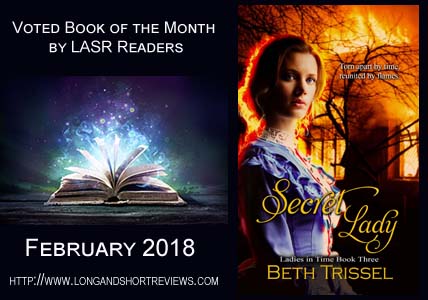



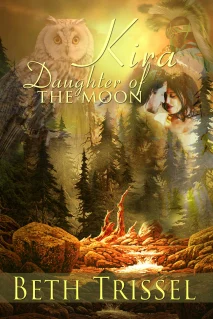

















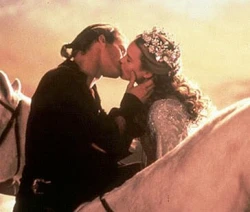








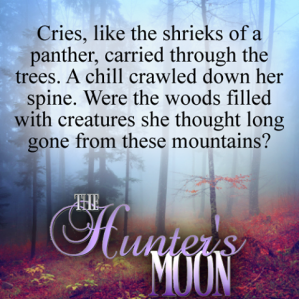
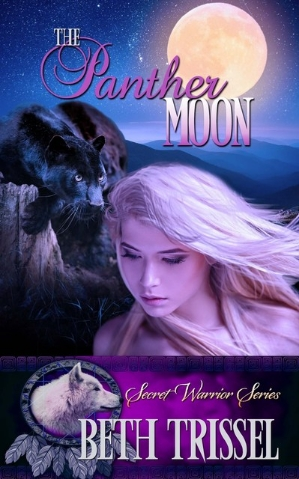


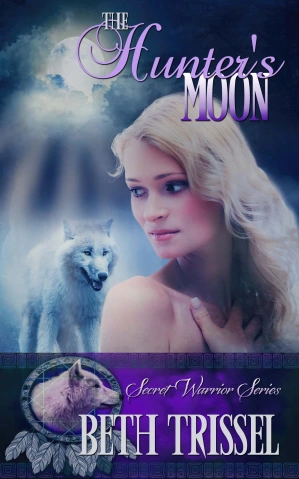
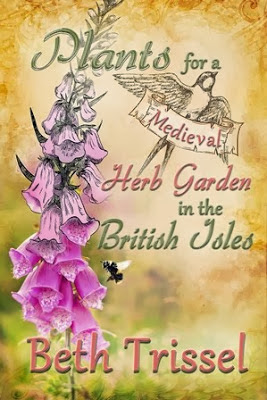
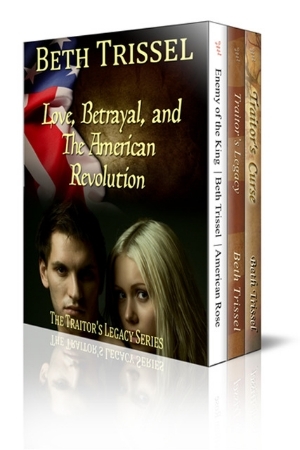

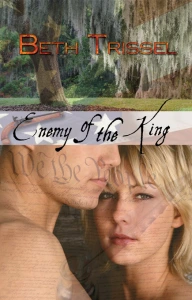



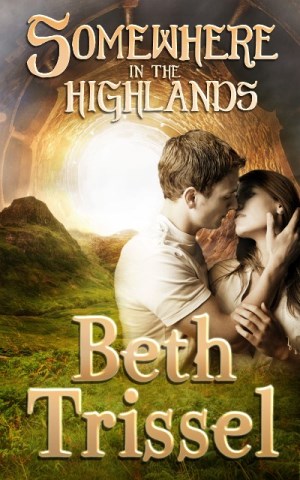
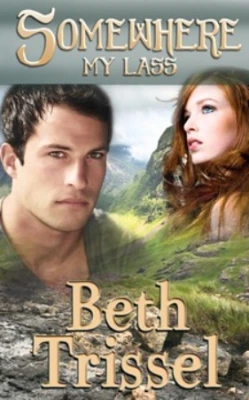









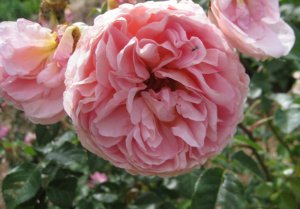
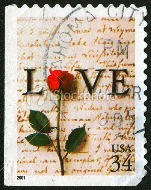
Pingback: Scarborough Fair
thank you that’s interesting
LikeLike
Beth, you always amaze me with your resourcefulness, and with your ability to choose those things which especially interest me,.
LikeLike
Thanks Caroline. How very kind of you to say.
LikeLike
So Romantic!
On my way to my first renaissance festival and I can’t get this medieval melody out of my head! It’s my minds need to escape the stress of these times we live in~so nice to be transported back in time by the enchanting nuances of a more simple and rustic life. A welcome diversion!!!
LikeLike
Thank you for the history and folklore research. As a Spanish teacher and fan of Cervantes; a fellow music teacher and I are taking a group of students along to the festival and this information will serve toonly enhance our experience. We appreciate and share your interest ~ Thanks for sharing it!. 😉
LikeLike
Thank you so much. Yes, the song is very inspiring and romantic.
LikeLike
Forgot to mention, I also am a fan of Cervantes. 🙂
LikeLike
The impossibility of the tasks reflect the impossibility, the contradiction in terms, of the premise of the song: “she once was a true love of mine”. True love is forever, you cannot “used to be” a true love. If ever she were a true love, she still would be.
LikeLike
This poem is…confusing yet romantic. It has a way of almost…entrancing its reader, almost as if you are the girl who was to perform these impossible tasks. It a lovely poem with a mysterious history. If only we knew who wrote it…
LikeLike
Yes, if only. Thanks.
LikeLike
The other interesting but poignant suggestion I read was that the herbs together form a common medieval remedy to cast forth a deceased child from the womb and to stem the bleeding…hence perhaps the intimation that the mother died with the child and is performing the impossible tasks as a purgatorial penance/act of restless grieving from the Otherworld.
LikeLike
whos the author of the song?
LikeLike
It’s an old English folk ballad and the author is unknown.
LikeLike
This song has literally penetrated my heart…like…I wish to go back in those medival times to see poeple and especially women with their those classical dresses. This information was quite helpful. An enchanting song indeed.
Thank you.
LikeLike
Agreed and thanks for sharing.
LikeLike
Hi Beth, did you use the legend in one of your books?. Just asking…faint memory a friend had of coming upon the legend in a novel!
LikeLike
Yes. In Somewhere My Lass.
LikeLike
Thank you
LikeLike
This was so helpful, thank you so much! I do have one question though- in the Simon and Garfunkel version, while one singer sings the part you described, another describes a soldier going off to war. How does this fit in with the theme of true love? Thank you for reading! xx Lily
LikeLike
There are different versions of the song. I don’t know how that fits.
LikeLike
The part you are referring to, Lily, is the “canticle” part of the song as performed by Simon and Garfunkel, and was written by S&G to add to their version.. It is not part of the original song.
LikeLike
Interesting, Beth! I always loved that song, but of course, had no idea what it was about.
LikeLike
I have always thought the song to be a test of true love. They ask the impossible, but will you at least try?? To love truly, you will try to make the impossible possible. A simple interpretation I’m sure, but a truly touching one to me.
LikeLike
Yes, it is/
LikeLike
I teach a class on cooking with fresh herbs and edible flowers and one thing we make is Scarborough Fair Savory Scones. 🙂
LikeLike
How lovely!
LikeLike
Hi Beth: So sorry we’ve been ghosts as of late. We’ve been locked away in our writing room working on our book for the past few months. But we’re reaching the finish line and can get back to our blogging buds soon; like you!! Well, I can’t tell you how much I loved this. But what Inion will do when she reads it. You know her love for herbs & their meanings and use. She’ll be re-reading this post and talking about it in our writing group!! It really is neat to think that this song we’ve all listened to and luv for so long, has a deep lyrical meaning. I often wondered the hidden message behind it. And this makes perfect freaking sense!!! Lovely post sharing now!! 😉 xoxo
LikeLike
Thanks, and very good to hear from you. Welcome back.
LikeLike
Hey Beth Trissel. A nice summary, well written 🙂 My research suggests the song is far far older, perhaps rooted in Kormak’s Saga (which tells of the impossible love of the warrior poet Kormak for the fiercely independent Steingerd) and the actual establishment of the first Viking settlement at Scarborough. http://www.silenttheory.net/2014/04/parsley-sage-rosemary-and-thyme.html
LikeLiked by 1 person
Very interesting! Thanks for sharing.
LikeLike
The lyrics aren’t about a man trying to regain his lost love. If they were then he’d set her tasks that could be done. Instead he asks her to make her a shirt without a seam, which couldn’t be done then and I’m not sure could even be done now. Find an acre of land between the salt-water and the sea strand, which starts right at the salt water. This song is massive middle finger to his ex.
It might have meant something different originally, but the lyrics as they are popularly known today are about someone making it clear it’s over.
LikeLike
i know that most people think that “this is a middle finger to his ex” but then the young man wouldnt go to the trouble of telling a traveler going to Scarborough Fair just to tell his “true love” it’s over. and in every stanza, the 4 herbs are always mentioned (which each have positive meanings in the medieval times).
LikeLike
Thanks. Good page.
btw
I don’t know the proper way of writing the phonetics but
in the uk we pronounce it ‘Scar bru’ / Scar b-ru’ / ‘Scar bu ru’. More the first two syllable version I think with the emphasis on Scar.
LikeLiked by 1 person
Thanks. I love the UK pronunciation.
LikeLiked by 1 person
scarborough fair is to tell of a elf king that likes a woman and the woman is using the herbs to protect themselves since people in the old times thought herbs will keep the supernaturals away
LikeLike
I find it interesting that the herbs parsley, sage, rosemary and thyme were all abortificants of varying degrees of efficacy.
LikeLike
A version of the song that I saw had a 2 more verses. One said, ” If (he or she) says they can’t………. at least tell me that they will try.” The final verse said,”For love demands impossible task……..But not anymore than any heart would ask.” According to Joseph Campbell, the idea of romantic love, which at time was new to Europe, was spread by minstrels. This song may be a great example of that.
LikeLiked by 1 person
Cool! Thanks Tom.
LikeLike
I absolutely adore this song and appreciate it even more now I know it’s deeper historical meaning. A personal meaning also comes into significance in the opening ‘..she once was a true love of mine’
LikeLiked by 2 people
I love this song and its history. Thank you.
LikeLiked by 1 person
Thank you so much!! This helped me a whole bunch with my schoolwork (I had to do an analysis on a love song for my advance programming English class), and you provided me with more than enough information 😀
LikeLiked by 1 person
Super! 🙂
LikeLike
I am at Scarborough as we speak. what a lush place thus is. well worth a visit.
LikeLiked by 1 person
Awesome!
LikeLike
I read its a hidden message about birth control herbs. It would be considered witch craft so had to be hidden in a song. Rosemary, parsley are known to bring on menstruation so could prevent pregnancy. The scarlet battlefield would mean menstruation. The seamless shirt some kind of tea bag I’d say. The clarion trumpet to pour the douche….you get the picture
LikeLiked by 1 person
Folk songs were passed down by aural tradition so that words evolved over time. It’s more likely that the refrain was originally “sober and grave grows merry in time” than anything to do with herbs.
Substitution of (often better) lyrics for words sung indistinctly is called a mondegreen. It takes its name from a Scottish ballad in which the line “they slew the eEarl of Moray and laid him on the green” is heard as “they slew the Earl of Moray and the Lady Mondegreen”.
Jimi Hendrix’s “s’cuse me while I kiss this guy” was originally “s’cuse me whil I kiss the sky”
LikeLike
it is about the plague, the faire is heaven. the man is dying and asks the impossible that would be for him to be with his true love again.
LikeLike
Thanks dear lady for this interpretation
I became familiar with this beautiful song in the late 1960s and it marked the beginning of a new phase in my life, when I came to America. Hearing that beautiful song in the movie “The Graduate” intensified its impact on me. Now that I am in my 70s, I watched the movie again and the song set my heart on fire once more. It makes me a bit sad that more than fifty years have gone by and I am not a young man anymore, but it also tells me that there has been some beauty in my life. I wonder, why did they play the song in The Graduate?
I still believe in romance and love.
Thanks for your interpretation
J
LikeLiked by 1 person
With regard to The Graduate, romance and love are only one theme, and perhaps not the most dominate. There is jilted love – or what passes for love (Ben & Mrs. Robinson), deceit (the secret wedding), and willful ignorance (Ben’s parents). Given this, I believe the song is well representative of those themes. Remember too that Sounds of Silence is at the end (the bus scene) and perhaps represents a turning away from the past and toward something new.
Finally, was Mike Nichols thinking this deeply about the underlying meaning of the song lyrics when placing them in the movie? Of course I don’t know, but suspect not. None of them were written expressly for the movie. The bigger motivation was probably the modern themes of this newly popular duo along with the larger movie context: The times, they are a changin’. Ironically, a song sung by S & G but not written by them, I believe it reflects the truest spirit of the film.
Greg Schaub
LikeLike
Sorry to be so late in replying. Thank you for your thoughts.
LikeLike
Pingback: Violog: #2 – Alan Fowler
Moderator, would you edit the last sentence as follows: …but not written by them nor in the film, I believe…
LikeLike
I do not see that I can edit this for you, though you may be able to. Thank you again for sharing.
LikeLike